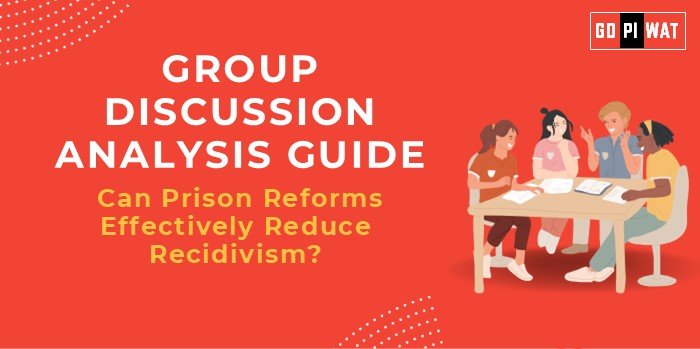📋 Can Prison Reforms Effectively Reduce Recidivism?
🌐 Introduction to the Topic
Opening Context: “Prison reforms are a cornerstone of criminal justice systems globally, addressing not just punitive measures but also the rehabilitation of offenders to reintegrate into society effectively.”
Background: The concept of prison reforms stems from the need to transform correctional facilities into spaces for rehabilitation. Globally, countries have adopted measures like vocational training, educational programs, and psychological support to reduce recidivism.
📊 Quick Facts and Key Statistics
- 🌍 Global Recidivism Rate: 50% within three years of release (UNODC, 2023).
- 🇮🇳 India’s Prison Occupancy Rate: 130% (NCRB, 2022).
- 🇳🇴 Rehabilitation Programs: Norway’s reform-centric models have achieved recidivism rates as low as 20%.
- 💰 Cost of Reoffending: $182 billion annually in the U.S. (Prison Policy Initiative, 2022).
👥 Stakeholders and Their Roles
- 🏛️ Government Agencies: Policymaking and funding rehabilitation programs.
- 📢 Non-Governmental Organizations (NGOs): Providing education, legal aid, and post-release support.
- 🏢 Prison Administrations: Implementing reforms and managing correctional facilities.
- 👪 Society: Supporting reintegration through reduced stigmatization and employment opportunities.
📚 Achievements and Challenges
Achievements:
- ✨ Norwegian Model: Rehabilitation-focused prisons like Halden have reduced recidivism to 20%.
- 🇮🇳 India’s Tihar Jail Programs: Skill development initiatives have improved employment rates among ex-inmates.
- 🇬🇧 U.K.’s Transforming Rehabilitation: Reduced reconviction rates by 4% (2019).
Challenges:
- 🏚️ Overcrowding: India’s prisons operate at 130% capacity, limiting reform effectiveness.
- 💰 Funding Gaps: Insufficient allocation for reform programs.
- ⚖️ Societal Stigma: Ex-prisoners face barriers in employment and social acceptance.
Global Comparisons:
- 🇳🇴 Success: Norway and Sweden’s open prison models.
- 🇺🇸 Struggles: U.S. focuses heavily on punitive measures, leading to high recidivism rates.
🗨️ Structured Arguments for Discussion
- ✅ Supporting Stance: “Prison reforms like vocational training and therapy reduce reoffending by addressing root causes of crime.”
- ❌ Opposing Stance: “Without societal support and post-release integration mechanisms, reforms alone are insufficient.”
- ⚖️ Balanced Perspective: “While prison reforms lay the foundation, broader systemic changes are crucial for long-term success.”
🌟 Effective Discussion Approaches
- 💡 Opening Approaches:
- 📊 Statistical Impact: “With recidivism rates as high as 50% globally, effective reforms are not just necessary but urgent.”
- 📚 Case Study Reference: “Norway’s open prison system proves that humane treatment reduces repeat offenses.”
- 💬 Counter-Argument Handling:
- Highlight systemic barriers (e.g., overcrowding).
- Suggest solutions, such as societal reintegration programs.
📈 Strategic Analysis of Strengths and Weaknesses
- ✅ Strengths: Proven models (Norway, Sweden) and growing focus on mental health support.
- ⚠️ Weaknesses: Funding limitations and implementation gaps in developing countries.
- 🌟 Opportunities: International collaborations for best practices and technology-driven monitoring and education.
- ⚡ Threats: Political unwillingness and public resistance to funding reforms.
🎓 Connecting with B-School Applications
- 🌍 Real-World Applications: Topics for research projects in public policy, economics, or CSR initiatives.
- 💬 Sample Interview Questions:
- “How can businesses contribute to post-incarceration employment?”
- “Evaluate the impact of societal perceptions on prison reform success.”
- 📘 Insights for Students:
- Focus on interdisciplinary approaches involving psychology, sociology, and economics.
- Study global models to understand scalability and adaptability.


